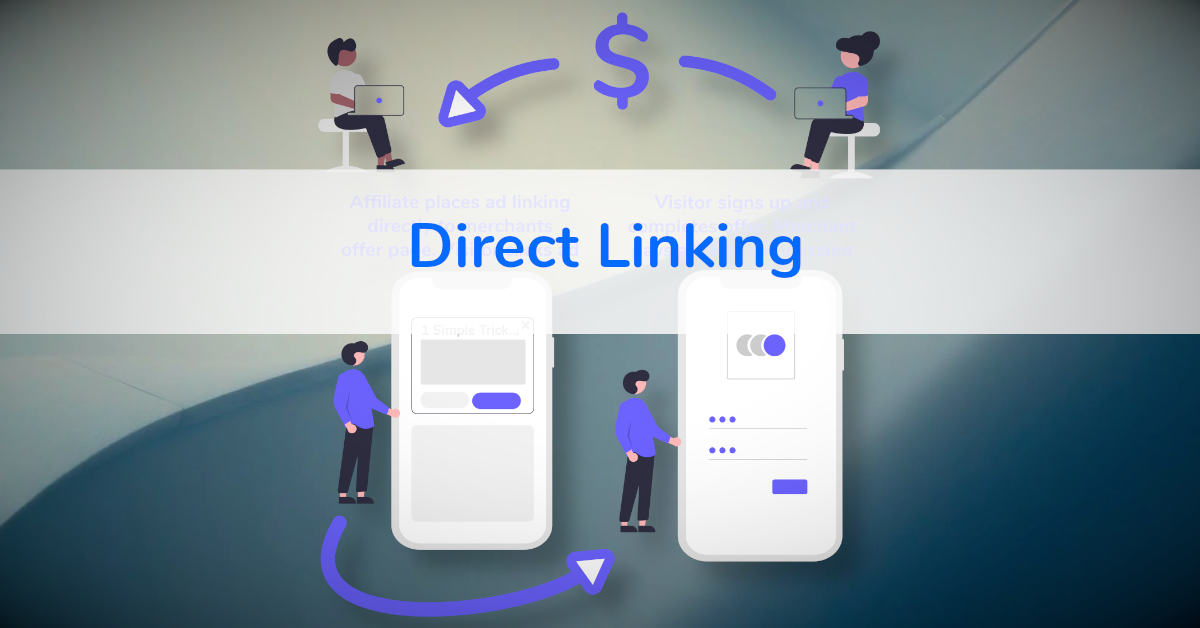In this article we look at how direct linking affiliate offers works including a real world campaign setup video.
- What Is Direct Linking?
- Benefits Of Direct Linking
- Finding Affiliate Offers
- Finding A Traffic Source
- Testing & Initial Results
- Optimizing Direct Link Campaigns
- Scaling Up Affiliate Campaigns
- 3 Tips For Direct Linking
- Video Example Direct Linking Affiliate Campaign
What Is Direct Linking?
Direct linking means sending traffic directly from a traffic source to a 3rd party affiliate offer. An ad is placed on the traffic source which when clicked will take the visitor directly the offer without any landing page in between.
For the visitor it creates a seamless one step conversion flow. For the affiliate it’s a simple but limited method to setup campaigns and test new offers.
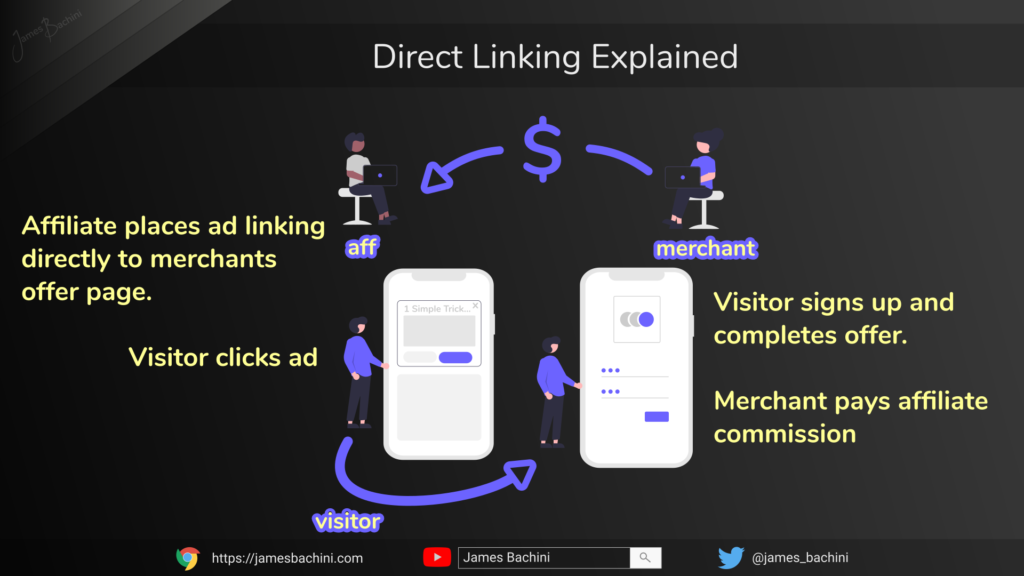
Benefits Of Direct Linking
Direct linking has the following advantages and disadvantages.
Advantages
It’s quick to setup you can just place an ad and wait for traffic.
There’s one less thing to optimize or go wrong so you can get a “pure” indication of the offer and traffic source quality.
For short form CPA offers, Email submits and app downloads it can work really well. The lower the barrier to conversion the more likely it is that a direct linked campaign will work. For example an email submit might not need a pre-sale landing page but a $2000 e-course almost certainly would.
Occasionally you can find affiliate offers the general public are familiar with or are trending which further lowers the barrier to conversion making direct linking more likely to be the optimal traffic flow. Examples would be something like AirBnB or TikTok which both have affiliate programs and don’t need introducing via a lander.
Direct linking is great for new affiliates who just want to test the waters but either can’t code or aren’t confident in their abilities to create a competitive landing page.
Disadvantages
It’s hard to add value as an affiliate if you are just direct linking a traffic source to an offer. You’ll soon be competing with other affiliates and internal media buyers which makes it difficult to have long-term, highly profitable campaigns.
There is one less thing to optimize which reduces the ability of the affiliate to increase conversion rates on the campaign.
Some traffic sources create problems with direct linking campaigns via a tracking redirect which can cause problems when running via an affiliate network or tracking platform. Basically some sources don’t allow redirects to different domains so your target URL has to match the final URL which causes all sorts of issues.
It’s easy to throw money away direct linking to affiliate offers that don’t have any tracking available. If you are running paid traffic to a internal app referral program for example you wont get any data to optimize with so it will be very hit or miss from the start.
Finding Affiliate Offers

In 2010 you could ask an affiliate manager what offers where hot on their CPA network, fire up some direct link ads from your favorite traffic source and it would often be profitable. In 2020 it’s much less unlikely that you’ll find high volume profitable campaigns this way.
I think the best way to find offers today is to look for VC backed companies that want growth at any cost. Often they will have generous referral programs or some kind of affiliate scheme directly within their app or web based platform.
A good way to think about this process is to work backwards. What apps or sites would be a really easy sell and could be converted in one click? Where could you send visitors to that they would actually want to sign up or purchase something.
Brainstorm a list of familiar brands and then visit their homepages and check the footer links for “Affiliates”, “Partners”, “Refer A Friend” type links.
Finding A Traffic Source
The initial test of a new offer should use a well matched, under saturated traffic source.
This comes down to where affiliates can add value. There’s so much information out there now about how to run ads on Google and Facebook that the offers owners internal media buying team will almost certainly be running on the most popular traffic sources.
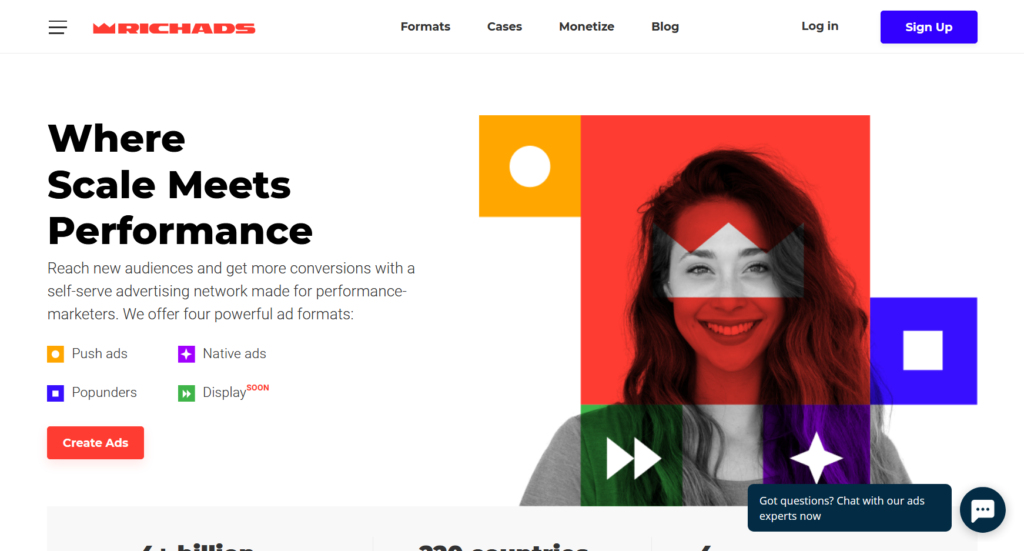
Fortunately there are thousands of traffic sources and ad networks out there for all sorts of obscure digital marketing methods. Push notification networks became popular with affiliates for this reason. They were and still aren’t over saturated with brand advertisers leaving room for competitive affiliates to make margin on their campaigns.
If you have a specific traffic source that you are already familiar with then this will be an advantage. All traffic sources take some time and funds to learn the quirks of setting up campaigns, optimizing and creating blacklists.
Certain traffic sources have specific demographics and it’s important to match the demographic to the offer. An affiliate offer focused on millennials might be more suited to TikTok rather than LinkedIn ads for example.
Testing & Initial Results
When setting up a direct response campaign affiliates should track as much optimizable, relevant data as possible. We need a way to see what ads, zones, sources are best converting visitors into customers.
There’s a number of ways to do this. One would be to use a tracking redirect and conversion pixel. Most tracking software will have options available for this but it’s easy to do on your own as well.
Another option is to use the internal tracking on the affiliates panel. Many affiliate networks use Tune or something similar which gives you a more than adequate tracking platform without needing to set up your own. If there’s a tracking platform provided then I’d recommend using it as opposed to your own redirects initially because it will speed up the page load times.
Some direct advertisers wont have any form of tracking set up and wont be willing to place conversion pixels for new affiliates. If this is the case then it’s going to be an uphill battle but if an initial test is profitable then it would be a good candidate to start building out a more elaborate funnel which can be optimized and scaled.
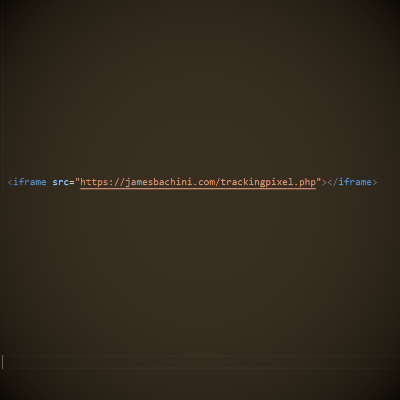
Once you show you can send a decent number of leads most affiliate offer owners will be willing to place a custom conversion pixel for you which will feed back conversion data to your tracking system. A simple iframe on the “thank you for signing up” page gives the affiliate the most flexibility and is just one line of code for the owner. This can then also be used with ad networks machine learning algorithms to build look-a-like audiences.
Optimizing Direct Link Campaigns
An initial test will give you an ROI figure. For me anything above 50% (as in I only lost half my money) is a positive. From here I can optimize and develop the campaign to target profitable pockets of traffic.
Some affiliates recommend optimizing one thing at a time where as I prefer to collect data on everything from the start and optimize as soon as there is enough data to make accurate decisions.
So an initial test may look something like this
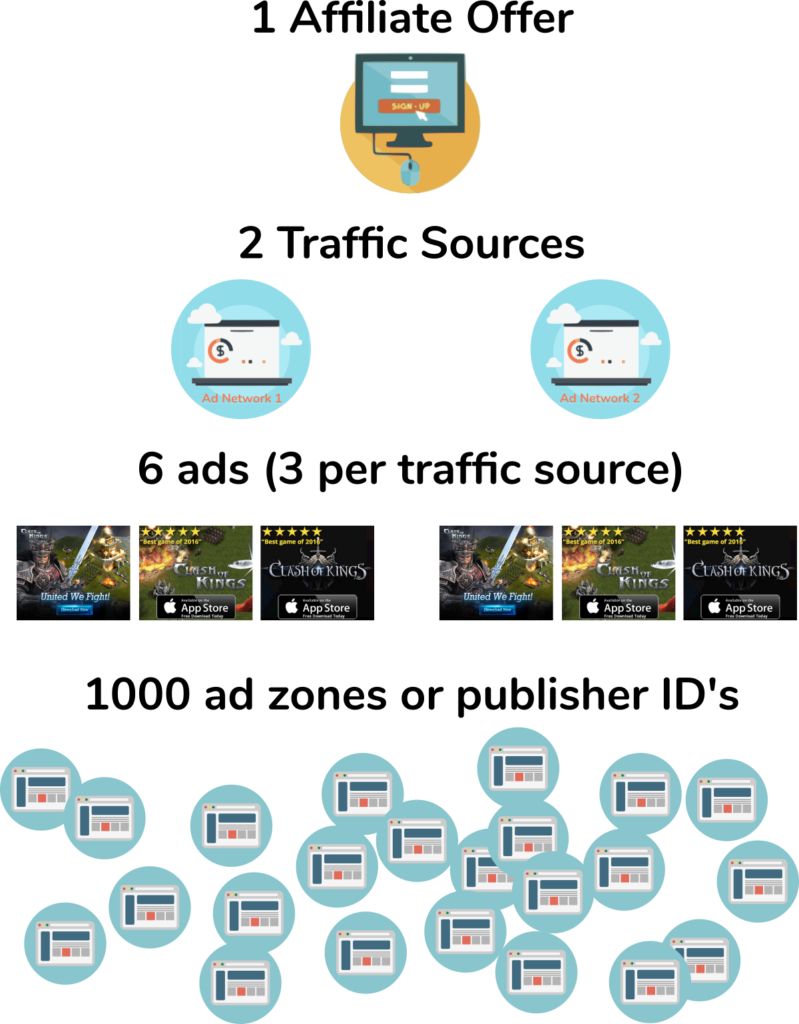
The first data I’ll get will be about the offer itself. If spend is at $100 and I have zero $3 CPA conversions then something is probably broken.
The next thing I can start to optimize is the traffic sources. I’ll have larger volumes of data for traffic sources than I will for ads or zones which will enable earlier decisions. If one ad source is working well and the other isn’t converting then it makes sense to focus on that.
Next we have ads. I employ a process of continuous improvement so after say 1000 clicks I’ll look at the click-through rate and conversion rate of each of the ads. Pause any that aren’t performing and create variations for the best performing ads.
Finally we have zones or publisher ID’s. Most traffic sources will have more than one zone or publisher and each will convert differently. Ideally you’ll want a standard whitelist of good zones or blacklist of the really bad traffic before you start the campaign but if not you’ll have to build this over time.
Not all zones will send the same volume of traffic so the highest volume zones will need optimizing before the low volume zones. In practice this means logging in to a traffic source once every few days and going through the data to block any non-performing zones that have accumulated enough traffic for you to confidently be able to say they wont work moving forwards.
Scaling Up Affiliate Campaigns
If an offer is profitable then it’s time to start scaling it up. The beauty of affiliate marketing is you can expand winning campaigns and cut losing ones quickly.
There are a number of different methods to scaling up an affiliate offer and often affiliates will try all of them.
Going Global

A campaign that works in one country will likely convert well in other regions. Affiliates will be somewhat limited by the geographic regions a merchant accepts.
Merchants will often provide different payouts for different regions. You should find that this matches the cost for traffic for those regions. So a US offer might have a $5 payout and you are paying $15 cpm where as MX (Mexico) will have a $1 payout but traffic only costs $3 cpm.
For most affiliate campaigns I’ve run US traffic is 50% of the revenue, Europe 25%, Canada 10% and Rest of World 15%. This may be somewhat distorted by my competitiveness in English speaking markets but the main point is that US is by far the biggest market financially to target.
Europe & Asia are somewhat challenging because of all the different languages. Services like onehourtranslation.com can do a better job than Google Translate at providing translations that will actually convert well.
Scaling Across Traffic Sources
If your campaign is profitable across one ad network then it’ll likely do well on similar traffic sources.
If you can get something profitable on Bing Search Ads then it’s time to migrate it to Google Search Ads and start trying to compete for higher volumes.
Traffic sources are all different and take some time to learn and optimize. A significant budget will be required for each traffic source to test and get the campaign running right.
As soon as you start scaling across multiple traffic sources every affiliate copycat is going to see the campaign as well. This is usually the time when you’ll start seeing competitors stealing your ads and landing pages.
Bare in mind that traffic on different networks will convert differently for both you and the merchant. Different ad networks have different demographics which may back out differently on the back end for the advertiser. In the past I’ve had merchants pause the offer I was running after scaling because the new traffic didn’t convert as well for them as the original test.
Test new sources slowly and build up the volume gradually. If possible communicate with the affiliate manager regularly to get feedback on traffic quality.
Scaling Up Each Traffic Source
Affiliates want as much traffic as possible for their profitable campaigns. To achieve this many traffic sources will allow:-
- Increasing CPM/CPC bids
- Setting up multiple campaigns
- Duplicating campaigns (can increase frequency reducing ROI)
- Uploading more ads
- Connecting programmatically to get access to traffic before it hits the DSP
- Doing direct fixed rate deals for monthly placements
- Expanding reach by broadening targeting options
- Developing look-a-like audiences using conversion data
- Setting up retargeting campaigns
These are just some of the ways to expand volumes and each traffic source is different. Test and reiterate on what is working.
Develop A Funnel
If you’ve found an offer that works well direct linked then consider building out a conversion funnel.
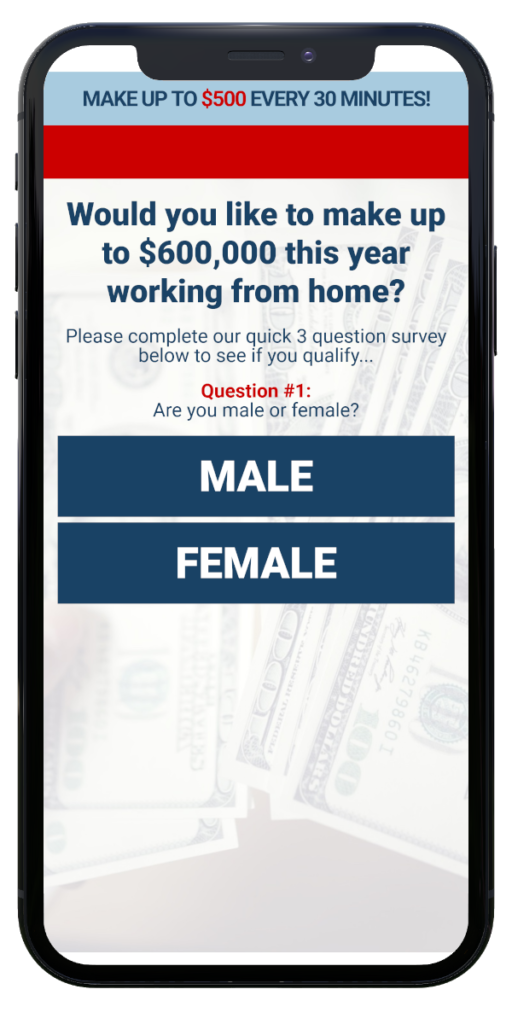
The first step is to put a landing page (and optionally email collection form) between the traffic source and the ad network. This will allow the affiliate to pre-sell the offer, collect micro-conversion data and build out an email list which holds long-term value.
Look at what other advertisers in the niche and on the traffic source are doing. Could this be converted or adapted to fit your offer?
The downside is that you’ll be getting a drop off on the landing page. So a certain number of people will hit your landing page and then not continue to the offer. These visitors would not have converted anyway however. In theory you should see a lower number of clicks to the offer but a much higher conversion rate and ultimately higher revenues due to the pre-sell.
Split-test it against direct linking and see which drives the most revenue. If it’s close then go with the funnel as there is more room for optimization and future monetization with a complete funnel than there is with a direct linked campaign.
3 Tips For Direct Linking
Here are three tips that I think are important when setting up and running direct linked affiliate marketing campaigns.
Track Data From The Start
There’s nothing worse than getting a campaign to 90% ROI and not knowing how you can optimize it to get it profitable. Track as much relevant data that will help optimize the campaign as possible from the start.
Find Unique Offers
Time spent at the start looking for unique under-saturated offers will greatly increase your chances for success. If it’s already being run by every affiliate in the industry then the chances of adding enough value through a direct linked campaign to generate long-term revenues is slim.
Fail Fast & Often
Finding profitable direct linked campaigns is difficult and having realistic expectations will help. You might have to try ten traffic source > offer combinations or you might have to try a hundred before you find your first profitable campaign.
Limit costs and plan time efficiently to try as many new things as possible. If something isn’t working cut it and move on. Eventually a profitable campaign will come along which can be scaled up to cover any losses from the tests.
Video Example Direct Linking Affiliate Campaign

If you are interested in learning more about online marketing then check out the free digital marketing course.
If you’ve enjoyed these resources could you help share this content on social media and send it to anyone who you think might benefit from it.
Thank you.


